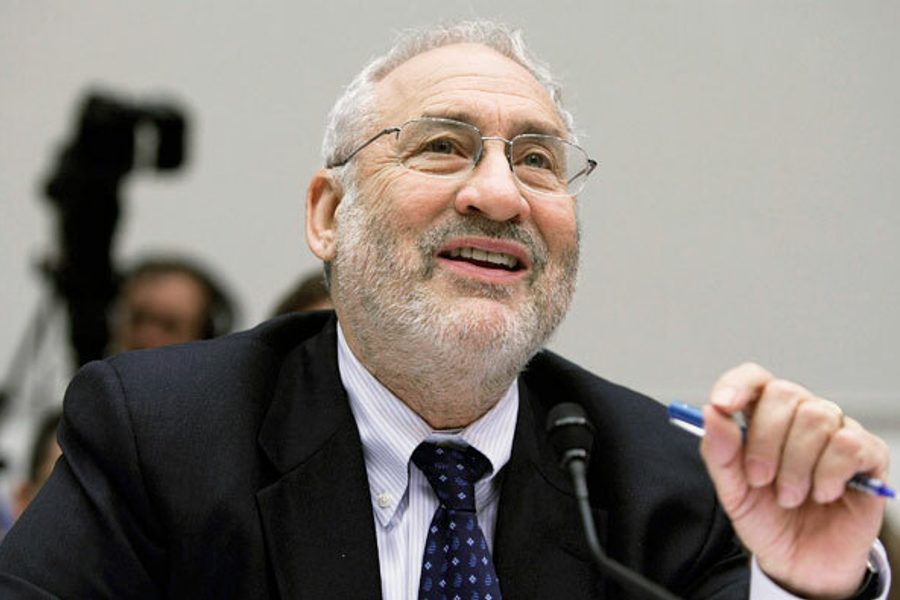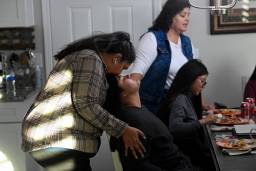
When control of the House and Senate flipped narrowly to Democrats following the 2006 elections, many Republicans tried to keep a brave face. They banked on 2008 as a year of change – which is exactly what it is shaping up to be, though not in the way the minority party had hoped. Rather than wresting away the speaker’s gavel from Rep. Nancy Pelosi (D-Calif.), House GOP leader John Boehner (Ohio) faces more losses in his ranks.
A stark imbalance in retiring incumbents – a margin of 28 Republicans to six Democrats among a total of 435 House seats – leaves Pelosi and her party with pickup opportunities in the newly vacated slots.
The retirement trend – equally salient in the Senate, where all five exits afflict the GOP – isn’t the only dynamic benefiting Democrats. The unraveling of the Bush administration, as it limps to its final curtain through a recession, a financial meltdown and a sixth year of war in Iraq (and the eighth year in Afghanistan), is a drag on Republican candidates in many states and districts. As a result, the question is not whether Democrats will gain seats in either chamber, but how many they will gain in each.
Donors and dollars
Based on financial reports through August 2008, Democrats head to Election Day boasting advantages in their war chests. In the House, the margin is $54 million to $14 million over the GOP. In the Senate, the margin is $34 million to $27 million over the GOP.
Compared with earlier election cycles – in which overwhelming Republican resources forced Democrats to marshal money for a tight cluster of targeted races – the dollar superiority this year affords Democrats the chance to compete in more districts. They can do what political strategists call “expand the playing field” – challenging GOP candidates even in districts that ordinarily lean their way.
Democrats plan to purchase $53 million of advertising in 51 congressional districts, according to congressional analyst Stuart Rothenberg. This amounts to a two-fold expansion over 2006, when the public’s strong anti-incumbent, anti-Republican sentiments netted Democrats 30 new seats, including some unanticipated victories.
Heavier voter turnout in presidential elections tends to yield a return of some marginal seats to the party traditionally dominant in that area. Still, Democrats’ combination of resources and an expanded playing field are likely to lead to an overall gain of several seats.
Three other factors have a significant bearing on congressional races this year: momentum, context and changes in the electorate. None of these dynamics holds much consolation for Republicans.
Expanding the field – and the electorate
Since March, Democrats have won three special elections for Congress in districts that Republicans had represented for decades.
One was the northern Illinois seat of former GOP House Speaker Dennis Hastert. He resigned midterm only to see the seat he had held for 21 years go to Democrat Bill Foster, who took full advantage of an endorsement from home-state senator and presidential candidate Sen. Barack Obama.
The results of the other two special elections – in Louisiana and Mississippi in May – were early indicators that Obama exerts a strong pull on all types of Democrats, as well as on many independents and moderate Republicans. In both contests, GOP allies sought to boost their candidates by playing on racism in linking the Democratic candidates to Obama. Both attempts fell flat. The Democrats prevailed, pushing their party’s total margin in the House to 38 votes, or a difference of 19 seats.
Throughout the primary season, Obama staff and volunteers have attempted to add thousands of new Democrats to the voter rolls through carefully structured registration drives. In the fast-growing swing state of Nevada, for instance, this effort has helped give Democrats their first major edge in overall registration in a generation.
And in Pennsylvania, according to the Harrisburg Patriot-News, Democrats added more than 98,000 new registrants, while Republicans added 289 since the state’s April primary. During that same period, more than 45,000 voters re-registered as Democrats, while only 17,000 switched to the GOP. As Chris Hayes of The Nation has reported, such efforts build on Obama’s experience as an organizer and voter-registration activist and have a potentially far-reaching effect.
The country has roughly 170 million registered voters and about 55 million unregistered, eligible voters. By the time pre-election registration ends in many states in early October, there may be as many as 5 million new voters this year.
In swing state New Mexico, left-leaning organizations have taken the lead in signing up new voters. Such efforts could be pivotal. In 2004, Patricia Madrid – a progressive hero as attorney general for single-handedly striking down a divisive statewide anti-gay ballot measure that would have cost millions to fight – lost a House race against incumbent Heather Wilson by only 861 votes. And Sen. John Kerry (D-Mass.) lost to President Bush in the state by fewer than 6,100 votes.
This year, despite a state law restricting coordinated voter registration, more than 65,000 new voters have signed up in New Mexico. All three House seats and a Senate seat are up for grabs. And if the national race is close, the state’s five electoral votes may decide the presidency.
TOP 12 RACES TO WATCH IN THE HOUSE
Seats vacated by retiring Republican incumbents
The theme of corruption that Democrats hammered two years ago to gain majorities in both chambers has lost some of its bang on the campaign trail. This season, rumbles from the shaky economy provide the background noise. Still, scandal-related departures by long-serving GOP representatives account for three of the top 12 House openings, and one of the top four Senate prospects that Democrats are poised to exploit this election.
1. California’s 4th District
In this Republican-leaning northeast California district – stretching from the Oregon and Nevada borders down to the suburbs of Sacramento – Democrats are closing in on one of the biggest upsets.
The retirement of nine-term Republican John Doolittle – stung by accusations that his wife collected commission on contributions to his campaign and facing an investigation in connection with disgraced lobbyist Jack Abramoff – created an opening for second-time candidate Charlie Brown. The retired Air Force pilot has championed veterans’ issues.
Although Brown narrowly lost to Doolittle in 2006, he rides into this election against a divided GOP. State Sen. Tom McClintock, a former candidate for state controller and favorite of the far right, edged former Rep. Doug Ose, a Republican moderate, in the June primary. McClintock, a vociferous foe of state spending from a southern California district, has been dogged by allegations that he took more than $300,000 in taxpayer-funded per-diems for lodging expenses while actually living up north near the state capital.
2. Illinois’ 11th District
This central Illinois district, ex-urban home to Chicago emigres and a growing Latino population, has lost its sharp GOP tendencies in recent elections. And the retirement of seven-term Republican incumbent Jerry Weller amid corruption allegations over unreported land holdings in Central America has left an opportunity for Democrats.
Marquee candidate and state Senate majority leader Debbie Halvorson faces Martin Ozinga, owner of a concrete company. Ozinga, who has faced fallout from a turf battle with an elderly local landowner displaced by his firm, has allied himself with Republican presidential candidate Sen. John McCain (Ariz.) in advocating expanded drilling, including in Alaska’s Arctic National Wildlife Refuge.
Halvorson, who prioritizes expansion of healthcare coverage, enjoys support from Emily’s List, the campaign training and funding source for pro-choice Democratic women.
3. Minnesota’s 3rd District
Few districts showcase the changing face and political leanings of American suburbs better than this one, on the western outskirts of Minneapolis. Ashwin Madia, a former Marine and son of Indian-American immigrants, seized the opportunity furnished by the retirement of nine-term moderate Republican Jim Ramstad.
Madia made waves this spring with a spirited campaign for the DFL (Democratic-Farmer-Labor) Party nomination that targeted and won over local Democrats and sidelined Democratic challengers. He faces Erik Paulsen, a GOP state legislator and longtime Ramstad aide.
Madia served as a Marine prosecutor and legal adviser in Iraq, and later advised a torture victim pressing for asylum in the United States. He thus has firsthand knowledge of two of the foremost moral issues defining the Bush legacy and framing the agenda of the next Congress.
4. New York’s 13th District
This district, covering Staten Island and a part of Brooklyn, one of the only urban seats in the nation held by a Republican, became a Democratic pickup opportunity rather suddenly this spring. Vito Fosella, the six-term incumbent, announced his retirement following a drunk-driving arrest in Virginia while on a visit to a daughter he had fathered out of wedlock and not previously disclosed.
Mike McMahon, a New York City council member with expertise on waste, recycling and alternative energy, elbowed aside a challenger in the September primary. He enjoys support from labor, environmental groups and Mayor Michael Bloomberg. In the Nov. 4 matchup, McMahon will face Robert Straniere, a former Republican member of the state Assembly and now owner of a Manhattan hot-dog restaurant.
5. Virginia’s 11th District
Fairfax County, with the highest average household income in the nation, sits in northern Virginia, just west of Washington, D.C. Once a Republican stronghold, it has grown steadily more Democratic in the past decade.
The retirement of seven-term incumbent Tom Davis has left Gerry Connolly in the driver’s seat for this Democratic pickup. Connolly is in his second term as chair of the Fairfax County board of commissioners and faces Keith Fimian, founder of a residential and commercial property-inspection company.
Because polls close early in Virginia, at 7 p.m. on Election Day, this seat may be one of the earliest indicators on Election Night of overall trends in the balloting.
6. New Jersey’s 3rd District
In a district snaking from the Jersey Shore inland to the Delaware River and the Philadelphia exurb of Cherry Hill, Democrats sense another pickup opportunity. Following his announcement of prostate cancer, Republican Jim Saxton will retire after 12 terms. Vying to keep the seat in GOP hands is Medford town mayor Chris Myers, a Navy veteran of the first Gulf War and a vice president at Lockheed Martin, the defense contractor.
Longtime Democratic state Sen. John Adler has parlayed robust fundraising and a nearly nine-to-one edge in available cash to brand Myers as a foot-soldier of conservative ideology. Adler’s record includes bills to facilitate absentee voting by military personnel and students and access by consumers to medication at pharmacies without discrimination. He enjoys endorsements from the Teamsters and NARAL-ProChoice America.
7. New Jersey’s 7th District
State Rep. Linda Stender hopes this fall to win the seat that barely eluded her two years ago. The retirement of Republican Mike Ferguson, who beat Stender by fewer than 3,000 votes last time, has made her goal more achievable. Again giving Stender a boost is Emily’s List, the national fundraising powerhouse that trains and touts pro-choice Democratic women candidates. She faces Leonard Lance, a second-term state senator.
Stender gained national traction in 2006 for defending New Jersey widows of men killed in 9/11 against personal attacks by right-wing attack dog Ann Coulter. With evidence mounting that Stender was poised to knock off the incumbent, she then faced a barage of eleventh-hour GOP attacks playing on her last name and calling her a reckless “spender.”
This time, however, Republicans are not as well-marshaled. Conservatives in New Jersey’s 3rd and 7th districts have struggled to close ranks following divisive fights in the primary. This factor may give both Stender and Adler an advantage.
8. New Mexico’s 1st District
Republicans have seen their grip on this Albuquerque-based district steadily slip away in the 10 years that incumbent Heather Wilson has held it. Her reported involvement in the firing of U.S. Attorney David Iglesias amid partisan pressure and retaliation helped make Iglesias a reluctant poster child for the Bush administration’s abuses of power. Those revelations, and Wilson’s response to them, also helped sink her primary campaign for the Senate.
Enter Martin Heinrich, member of the Albuquerque city council, with a background in land-use issues, human service and nonprofit advocacy. He faces Republican Darren White, the sheriff of Bernalillo County, in this hard-fought race. Heinrich brandished his appointment by Gov. Bill Richardson to head the Office of Natural Resources Trustee to prevail with 44 percent of the ballots in a crowded Democratic primary against candidates with better name recognition. He will need even more of that moxie to win the general election against White.
9. New York’s 25th District
Republican Jim Walsh had seen his Election-Night majorities in this Syracuse-based district grow ever more precarious in the course of his 10 terms. His departure this year opens the door to Dan Maffei, a former local news reporter and member of the Communications Workers of America, and current director at a capital-management firm. The Democrat faces Dale Sweetland, a Republican with a background in agribusiness and now an insurance agent.
10. New York’s 26th District
It is a rare member of Congress who departs voluntarily after only five terms. But Tom Reynolds fell on hard political times. He had to fight to exonerate himself from colleagues’ blame for the Mark Foley page scandal, despite his senior aide’s early efforts to blow the whistle on the former congressman. And buck-passing for heavy GOP losses in the midterm election also stopped at the desk of the Rochester Republican, who managed his party’s congressional campaign message and fundraising in 2004 and 2006. Then there was the embezzlement of up to $1 million from the committee coffers that Reynolds oversaw.
Seeking the vacant seat are Democrat Alice Kryzan and Republican Christopher Lee. Kryzan, an environmental attorney, pulled off a political shocker in the sparsely attended September primary, besting progressive favorite Jon Powers by 1,300 votes, as well as beating three-time candidate Jack Davis. Powers, who remains on the general-election ballot on the Working Families line, outspent Kryzan by more than a three-to-one margin.
Even as she squares off against Lee, president of an automation company, Kryzan is a reminder that contending for Congress is not solely a rich man’s game.
11. Ohio’s 15th District
Franklin County Commissioner and attorney Mary Jo Kilroy hopes to win her second bid for this seat, representing a central Ohio district that stretches west from downtown Columbus. Incumbent Rep. Deborah Pryce only narrowly held off Kilroy’s challenge in 2006 and, after eight terms, is seeking to pass the baton to state Sen. Steve Stivers. A former banking lobbyist, Stivers is a national guardsman and veteran of the war in Iraq. His formidable bid means that the same coalition of labor, environmental and pro-choice groups that ginned up votes for Kilroy last time must leave no stone unturned for her to prevail in this race.
12. Wyoming At-Large
The fact that the state’s lone seat in the House – once held by Vice President Dick Cheney – may now be claimed by a Democrat is another indicator of how far GOP stock has sunk this year.
Gary Trauner came within about 1,000 votes of beating Republican Rep. Barbara Cubin in 2006. His renewed challenge gave the six-term incumbent an extra nudge into retirement. Trauner, a pro-gun and pro-conservation Democrat, boasts pro-business credentials, having founded cell-phone and Internet companies in the state. He faces former state treasurer Cynthia Lummis, who is embraced by anti-abortion groups.
FOUR OTHER RACES TO WATCH (not open seats):
• Colorado’s 4th: Betsy Markey is closing in on what two earlier challengers in three prior races could not quite achieve: the ouster of Rep. Marilyn Musgrave. Once rated the most conservative member of Congress, the three-term Republican earned the nickname “one-trick pony” for her sponsorship and grand-standing around an amendment to the U.S. Constitution to eliminate and outlaw the freedom to marry for committed same-sex couples.
Markey, a computer-security expert in the Reagan-era State Department and founder of a software firm, brings a blend of public service and business experience to the race. She also chaired the board of a food bank in the district, which covers the eastern third of the state. A late-summer survey showed local independents hungry for a change in Congress and siding with Markey.
• Florida’s 13th: Christine Jennings is mounting a rematch with Rep. Vern Buchanan. The Republican’s 2006 victory by 369 votes has been haunted by the apparent disappearance of up to 17,000 votes on touch-screen machines in Sarasota. Jennings carried the city overall and argued first for a new election and later for a full investigation. Buchanan retained the seat, which in a freakish bit of historical congruence, had been held for two terms by 2000 Florida recount antagonist Katherine Harris.
• Idaho’s 1st: Walt Minnick faces Republican Rep. Bill Sali. Ordinarily implausible for a Democrat, an upset in this district stretching from the Boise suburbs north through the state’s panhandle remains feasible given voters’ low regard for the incumbent. Sali represents a state that is nearly one-quarter Mormon, but he made headlines in 2007 for suggesting that members of minority faiths have no place in Congress and that such office-holders might somehow offend the Founding Fathers – who, he seems to have forgotten, wrote the First Amendment’s guarantee of religious freedom.
• Michigan’s 7th: Mark Schauer faces GOP Rep. Tim Walberg in south-central Michigan. Like Sali, Walberg won a deeply divisive primary and a first term in 2006 with help from the right-wing Club for Growth, whose hatred of regulation rivals only its contempt for moderate Republicans. Amid rising household debt stemming in part from costly acute-care for those without insurance, Walberg has drawn anger for suggesting that no one lacks healthcare coverage, since emergency rooms are open to everyone. Leadership like this has prompted at least one former Republican official in the district to switch parties and endorse Schauer. For the incumbent to lose, such crossover voters will prove crucial.
TOP FOUR RACES TO WATCH IN THE SENATE
All seats held by Republicans
1. Alaska
Anchorage Mayor Mike Begich challenges seven-term incumbent Ted Stevens, the longest-serving Republican in the Senate. Stevens prevailed against a primary challenger in August but was standing trial – as In These Times went to press – for allegedly breaking a federal ethics law by failing to report improvements on his home performed by a campaign donor. GOP governor and vice presidential candidate Gov. Sarah Palin has kept her distance from Stevens. As the state inquiry continues into possible abuses of power from her own involvement in the termination of a state law-enforcement official, Palin’s name at the top of the ticket will not exert the bipartisan pull she previously had in the state. This dynamic will benefit both Begich and the Democratic candidate for the state’s lone House seat, Ethan Berkowitz. He is also relying on an anti-corruption message in seeking to oust 17-term incumbent Don Young.
2. Colorado
The retirement of two-term incumbent Republican Wayne Allard leaves an opening that Rep. Mark Udall is angling to fill. He faces former Rep. Bob Schaffer, who has staked his campaign on continuing Bush’s tax cuts and expanded drilling. Udall continues his family’s legendary tradition of environmentalism. He has vigorous backing from union members, earned in part from his sponsorship of the Employee Free Choice Act, which aims to level the playing field in union elections by penalizing employers who intimidate workers or stonewall attempts to bargain.
Udall’s cousin came to Congress alongside him in 1998 and might also join him in the Senate. Tom Udall, two years older and one state to the south in New Mexico, is seeking to fill the seat of retiring six-term incumbent GOP Sen. Pete Domenici and leads in his race against Republican Rep. Steve Pearce.
3. New Hampshire
Former Gov. Jeanne Shaheen lost a close race to John Sununu six years ago in an election tainted by a phone-jamming scandal orchestrated by Republican operatives that crippled a Democratic turnout effort for several hours on Election Day. Since the peak of GOP fortunes that year, no state features a more dramatic change in political representation. Shaheen’s party now holds the governorship (which, like Vermont, has only a two-year term), the majority of the executive council, both House seats and both chambers of the once-overwhelmingly Republican legislature. The challenge of claiming one of the state’s two GOP-held Senate seats now belongs to Shaheen.
In 2000, with public schools facing massive cuts, Shaheen earned kudos for becoming the first governor in a generation to refuse the state’s notorious “no-taxes” pledge. Sununu, whose father served as chief of staff in the White House of Bush Senior, saw how running afoul of that pledge undid the re-election of his dad’s boss. Yet conservatives who applaud Sununu’s orthodoxy on tax policy no longer dominate state politics. And recent TV ads for Shaheen have turned Bush Junior into a tar baby for the Republican incumbent.
4. Virginia
The Old Dominion’s status as a presidential swing state on the brink of turning blue owes in part to the deep pockets and deft ear of Mark Warner. The former governor, who took the reins of state from Jim Gilmore in 2002, now puts his private war chest and fine-tuned appeals for education, transportation and innovation in economic development up against his predecessor in this race to succeed five-term Republican John Warner.
The two Warners faced each other 12 years ago, when Democrats were becoming endangered species in statewide office. Mark Warner responded to that surprisingly narrow loss to invest in party infrastructure at the local, county and state level. He later launched a spirited campaign for governor that literally used bluegrass and car racing as vehicles for appealing to voters. He won.
Among the milestones of his tenure was the repeal of a punitive state regulation that barred even localities and corporations in the state from covering workers’ domestic partners. Since 2005, Warner has helped fellow Democrats Gov. Tim Kaine and Sen. Jim Webb win successive statewide elections. Surveys in his Senate race place him 20 points ahead of Gilmore.

I hope you found this article important. Before you leave, I want to ask you to consider supporting our work with a donation. In These Times needs readers like you to help sustain our mission. We don’t depend on—or want—corporate advertising or deep-pocketed billionaires to fund our journalism. We’re supported by you, the reader, so we can focus on covering the issues that matter most to the progressive movement without fear or compromise.
Our work isn’t hidden behind a paywall because of people like you who support our journalism. We want to keep it that way. If you value the work we do and the movements we cover, please consider donating to In These Times.






